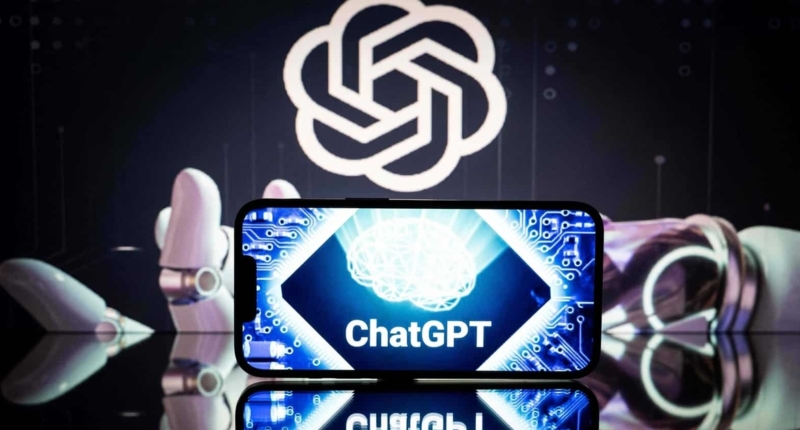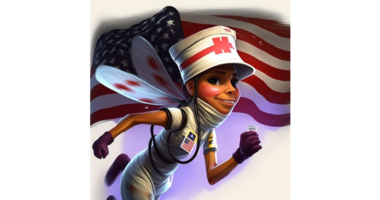OpenAI’s GPT-4 has been widely praised for its advanced capabilities in interpreting text and images to provide accurate responses to tricky questions. However, this advanced AI technology is also being considered a potential threat to humanity. While AI has the potential to revolutionize various industries, the worst risks are the ones we can’t anticipate. It is crucial to remain vigilant about the potential threats of this technology and to develop strategies to mitigate its risks.
GPT-4 has flaws that it has not been able to overcome, such as “hallucinations” where it makes factual errors, creates harmful content, and has the potential to spread disinformation to suit its bias. Despite its impressive capabilities, GPT-4 is still flawed and limited. As with any large language model, if the bot learns to lie, it’s because it has come to understand from those texts that human beings often use lies to get their way.
The potential consequences of advanced AI technology like GPT-4 remain a significant concern. While some argue that AI is not about the total automation of content production, it is about augmentation, giving professionals and creatives the tools to work faster and more efficiently. Nonetheless, the rise of AI technology remains an impressive achievement in the field of machine intelligence.
GPT-4: The Future of Machine Intelligence
OpenAI’s GPT-4 has caused a stir in the research community due to its advanced capabilities in interpreting text and images and providing accurate responses to tricky questions. The latest offering from OpenAI has surpassed its predecessor, ChatGPT, in terms of intelligence, and has demonstrated its potential to revolutionize various industries.
The Rise of Machine Intelligence
As machine intelligence continues to evolve, society is experiencing a pragmatic shift towards a new era of technology. The latest developments in AI, including GPT-4, have the potential to permanently reshape society, for better or for worse. While the future remains uncertain, it is clear that this new technology is capable of overwhelming the entire human generation with anxiety.
GPT-4’s Impressive Capabilities
GPT-4 has been widely anticipated ever since the release of ChatGPT. Researchers and academics have been amazed by its capabilities, which are based on a multimodal language model that can interpret both text and images. GPT-4 has aced a variety of tests, including the Uniform Bar Exam, Biology Olympiad, and LSAT, with higher reasoning capabilities and wider knowledge compared to human test takers.
Multimodal Intelligence in Action
Microsoft, Stripe, Khan Academy, and Morgan Stanley are just a few examples of companies using GPT-4 to revolutionize their respective industries. Microsoft is using it to transform its search engine, Bing, while Stripe is utilizing it for payments fraud. Khan Academy is creating personalized learning experiences for students, and Morgan Stanley is using it to guide its bankers and clients.
GPT-4 as an Enabler
GPT-4 is being used by millions of startups, claiming to use its secret recipe to create new products and improve operational effectiveness. Its potential applications are vast, including legal administration, medical diagnosis, academic research, marketing strategy, and even mundane chores. Tech giants such as Microsoft and Google are vying for supremacy in generative AI to dominate the world wide web by transforming search engines.
While the future of machine intelligence remains uncertain, GPT-4’s capabilities are undeniable. Its intelligence is beyond that of the average human, and its potential for revolutionizing various industries is significant. The rise of AI may be a double-edged sword, but it is clear that GPT-4 is a remarkable achievement in the field of machine intelligence.
GPT-4: The Potential Threats of Advanced AI
OpenAI’s GPT-4 has been widely praised for its impressive capabilities in interpreting text and images to provide accurate responses. However, this advanced AI technology is also being considered a potential threat to humanity. The more time experts spend with AI systems like GPT-4, the less convinced they are about knowing what’s coming.
The Potential Risks of AI
According to Kevin Roose in an opinion piece in the New York Times, the worst AI risks are the ones that we can’t anticipate. If AI does everything, what will be left for humans to do? However, Professor Charlie Beckett, Founding Director, Polis, argues in his column in The Guardian that AI is not about the total automation of content production. Instead, it is about augmentation, giving professionals and creatives the tools to work faster and more efficiently.
GPT-4’s Flaws
Despite its impressive capabilities, GPT-4 is still flawed and limited, and its “hallucinations” remain a significant challenge. This refers to the fact that GPT-4 is still prone to making factual errors and creating harmful content. It also has the potential to spread disinformation to suit its bias. OpenAI claims to have made GPT-4 safer and more aligned, but it is still 82 percent less likely to respond to requests for disallowed content and 40 percent more likely to produce factual responses.
The Potential Consequences
As Stephen L. Carter, a Bloomberg Opinion columnist, writes, any large language model is, in a sense, the child of the texts on which it is trained. If the bot learns to lie, it’s because it has come to understand from those texts that human beings often use lies to get their way. The sins of the bots are coming to resemble the sins of their creators. Thus, the potential consequences of advanced AI technology like GPT-4 remain a significant concern.
Despite its limitations and potential risks, AI technology like GPT-4 continues to evolve and revolutionize various industries. However, it is crucial to remain vigilant about the potential threats of this technology and to develop strategies to mitigate its risks.
Don’t miss interesting posts on Famousbio










